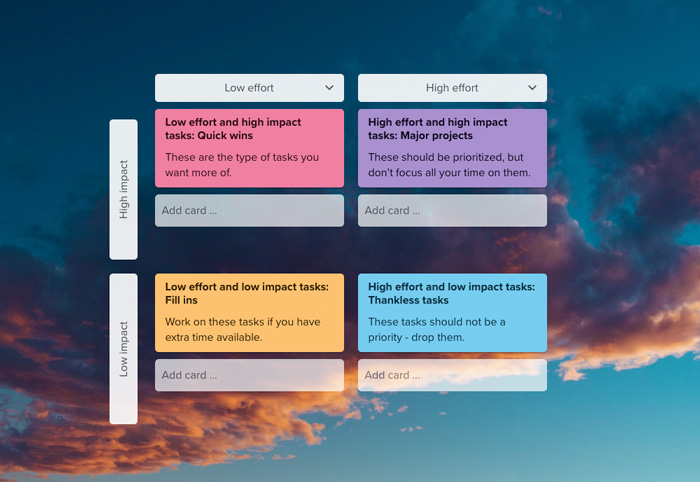Action Priority Matrix
Use the Action Priority Matrix to evaluate your tasks based on impact and effort.

The Action Priority Matrix is similar to the Eisenhower matrix, but the focus is on impact and effort instead of importance and urgency. It helps you see which tasks and projects that are worth your time. Start by evaluating your task in terms of effort and impact, and then place them in different quadrants of the Action Priority Matrix, which gives you a visual overview of how to prioritize your tasks.
1. High impact, low effort: QUICK WINS
Quick wins give you a high return for a low effort. These are the kind of tasks and projects you want more of.
2. High Impact, High Effort: MAJOR PROJECTS
Major projects requires a lot of effort, but also has high impact. They should be prioritized, but make sure you don’t focus all your time on these, because you could miss out on potential quick wins.
3. Low Impact, Low Effort: FILL-INS
Fill ins don’t require a lot of effort, but they won’t give a high return either. These are the kind of tasks and projects you can choose to work on when you have extra time available, e.g. if you don’t have any quick wins or major projects on your to-do list.
4. Low Impact, High Effort: THANKLESS TASKS
Thankless tasks (or hard slogs) has the worst combination of impact vs effort, where you put in a lot of work for a low return. These types of tasks should therefore be avoided.
Ready to get started?
Explore Upwave on your own or contact us to learn more.